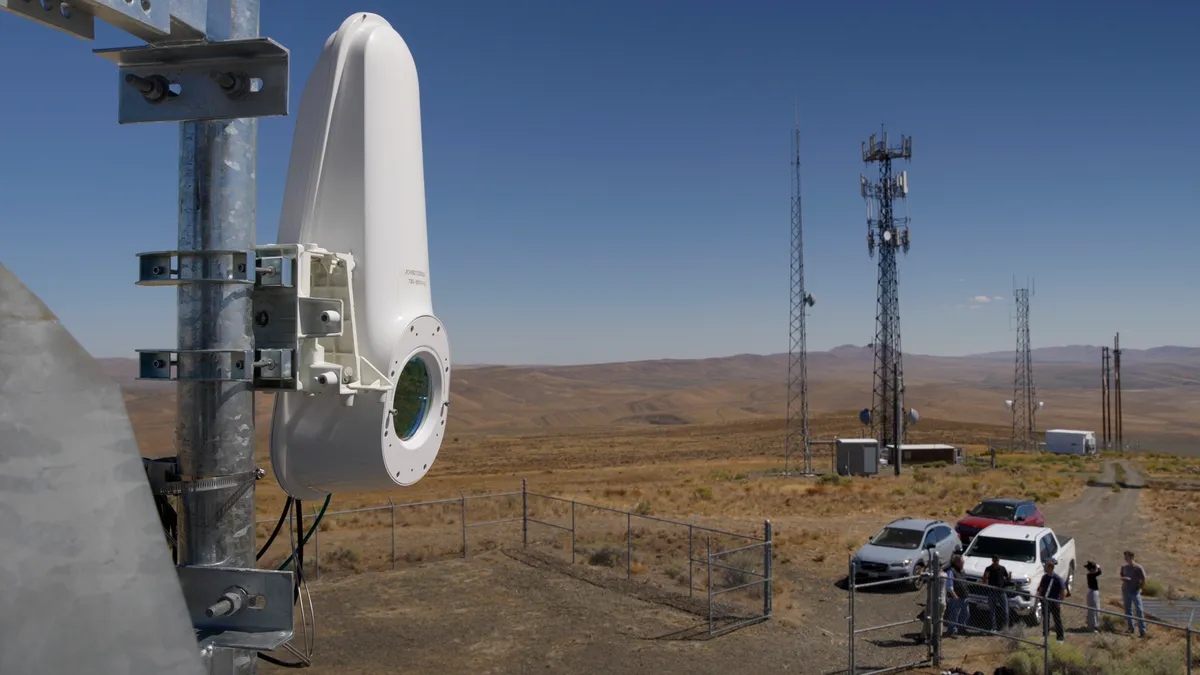A recent change to broadband funding in the United States has opened the door to faster, more flexible ways to connect hard-to-reach communities.
Last month, the U.S. federal government issued a major update to the $42.45 billion Broadband Equity, Access, and Deployment (BEAD) Program. The shift? A nationwide commitment to technology neutrality, requiring states to reevaluate the previous fiber-first strategies and consider all broadband solutions that meet BEAD's performance requirements.
From fiber and fixed wireless to free space optics, the new benchmark is clear: build scalable, high speed, low latency networks at the lowest feasible cost.
At Taara, we see this as an opportunity to reach more communities faster with abundant, affordable connectivity, using innovations in the light spectrum to overcome connectivity's common hurdles.
In some cases as a fiber alternative, but in many cases as a last mile fiber enabler.
Bridging the middle mile, faster
When people talk about internet access, they usually focus on the last mile—the connection that brings broadband into homes, schools, businesses, and community anchor institutions. But that connection doesn't work without the infrastructure that feeds it.
That's the job of the middle mile: it is the essential link between the internet backbone and local access networks. It's where high speed broadband projects often get stuck. Without a fast, affordable way to bridge the middle mile, even the best last-mile solutions can't be effective.
At railroad crossings, across mountain passes, over waterways or through protected land, where right-of-way is hard to secure, permitting takes months if not years, and fiber construction costs quickly become unmanageable, traditional wireless solutions like microwave or millimeter wave either lack the capacity to support the high speed internet BEAD requires, or depend on short hops and dense infrastructure, which can be expensive and difficult to scale in remote or rugged areas.
Taara leaps over these barriers.
.gif)
Delivering the speeds of fiber through the air
Using very narrow, invisible beams of light, Taara Lightbridge offers a high capacity, low latency connectivity that delivers the speeds of fiber without having to lay any fiber. Transmitting data at 193 THz in the unlicensed optical spectrum, it delivers 20 Gbps of high speed connectivity over distances up to 20 km, with sub 5 ms latency.
Designed for seamless integration with existing broadband infrastructure, Taara Lightbridge complements both fiber and wireless radios to expand high capacity networks. In Florida, Taara Lightbridge replaced millimeter wave links to extend a reliable 20 Gbps connection with seamless failover to microwave across 8 to 20 km. In California, it beamed high speed connectivity over a 7 km span, performing on par with top-tier wired infrastructure. Extending a fiber point of presence takes hours, not months, without the need for trenching, permitting, or licensed spectrum.

How Taara Lightbridge delivers for BEAD
Under BEAD's updated guidance, states are evaluating broadband technologies based on three key factors: cost, performance, and speed to deploy.
Taara Lightbridge delivers on all three:
1. Cost efficiency: Two small terminals, placed in line of sight, can establish light-speed connectivity – over rivers, valleys, railways, or rugged landscapes. No cables, trenching, or licensed spectrum required. In most cases, operators can deploy a link for less than the total cost of burying a few kilometers of fiber.
2. High performance: A single link delivers 20 Gbps of low latency, high speed connectivity, using the power consumption of a light bulb at either end of the link.
3. Rapid deployment: Lightweight and compact, Taara Lightbridge can be deployed on poles, rooftops, or towers within hours, making it an ideal option for projects on tight BEAD timelines.
Connectivity using beams of light over the air isn't just a viable alternative. It's an important piece of the middle mile puzzle.
.gif)
.gif)
From grounded to groundbreaking
The digital divide can’t be closed with fiber alone. With a mix of technologies, network operators and broadband service providers can build resilient, affordable broadband infrastructure that reaches further, faster, and at a lower cost of access for more people.
At Taara, we’re excited to offer a fiber-like solution through the air, helping partners manage costs, accelerate deployment, and deliver high performance connectivity to communities that have waited too long for broadband access.
If you are an operator looking for a way to build a scalable high speed, low latency network with a faster return on your network investments, please get in touch with us.
To learn more, read our light paper “Bridging the Middle Mile: What the BEAD Overhaul Means for the Future of Connectivity in the U.S."

%20(2).jpg)

.jpg)















.jpg)












